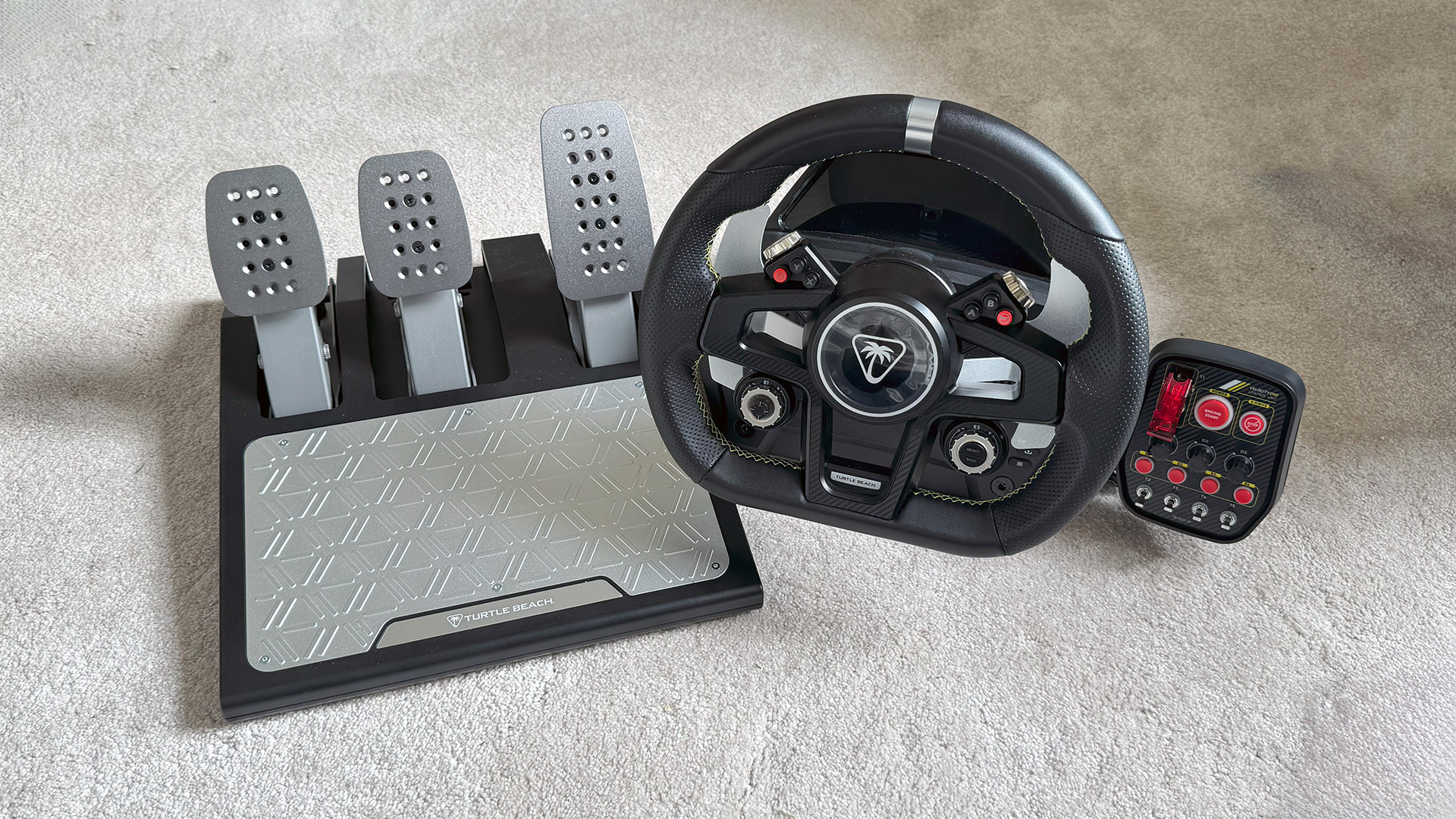GamesRadar+ Verdict
Turtle Beach has taken a solid first crack at making a racing wheel with the VelocityOne Race. It's got some premium features and a motor with a lot of potential, but unfortunately, it's hamstrung by teething issues.
Pros
- +
Punchy 7.2Nm direct drive motor
- +
Comfortable leather wheel
- +
Built-in display
- +
Includes wheel, wheelbase, and pedals
Cons
- -
Force feedback is unreliable and lacking at times
- -
The button box feels like a gimmick
- -
Poor plug-and-play compatibility
- -
RMD has limited uses
Why you can trust GamesRadar+
With a 20-year history, Turtle Beach will be a familiar name for gamers but the new VelocityOne Race arrives as the brand’s first ever racing wheel. This £629/$649 direct drive wheel lands in a bit of a gap in the market too, splitting the gear-driven classic Logitech G923 and more expensive, advanced options like the MOZA R12 and Logitech G Pro.
Sim racers have never been spoiled for choice when it comes to picking the best racing wheels for PC or consoles. While there are plenty of options at the top end of the market, newcomers have been left with just a couple of brands offering basic wheels and little more to choose from.
With a few unique tools up its sleeve and 7.2Nm of grunt behind it there’s potential on paper, but is Turtle Beach’s debut wheel a podium contender or will it trundle around at the back of the field?
Design
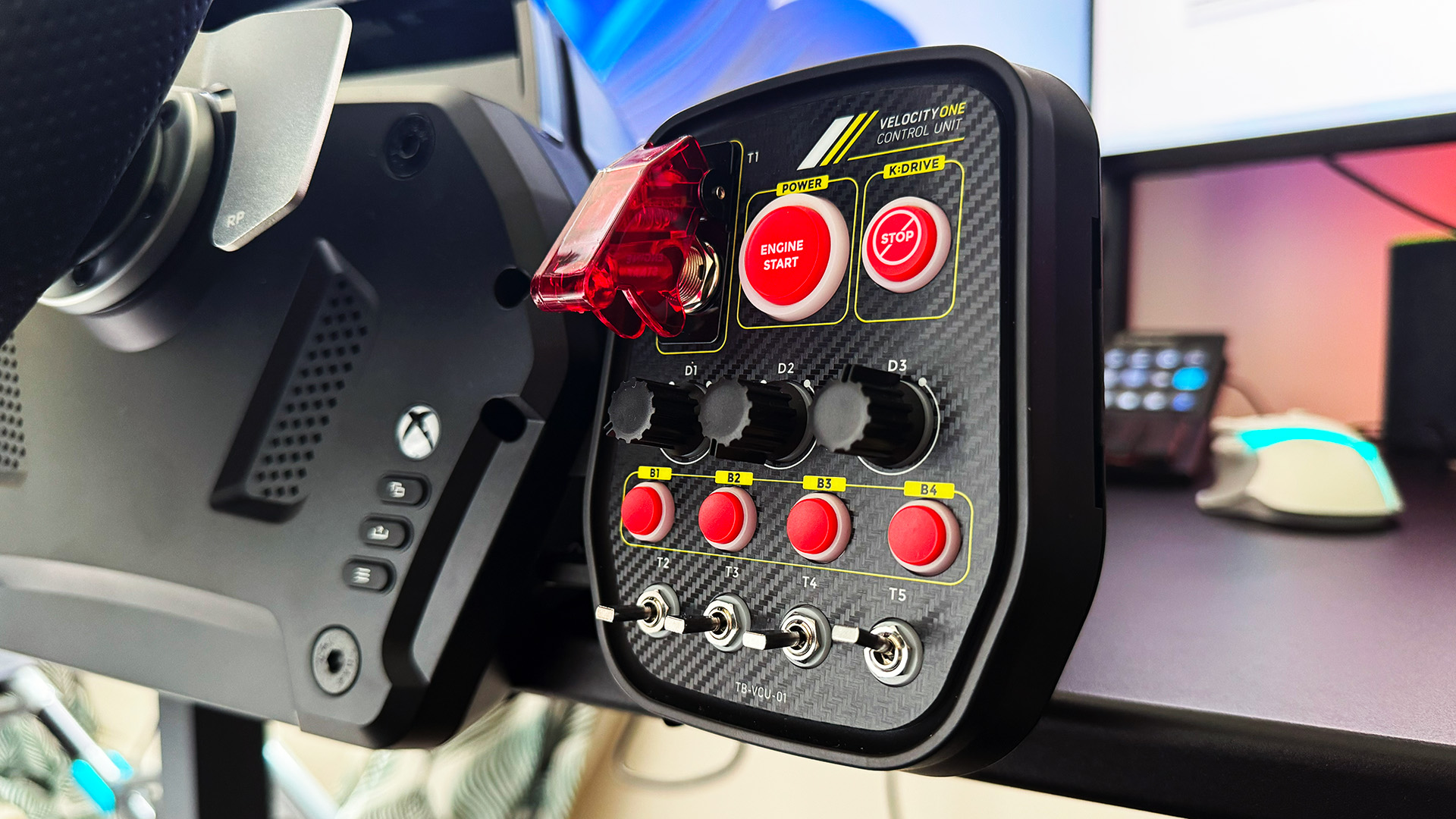
Direct drive wheelbases tend to follow one of two design theories; a compact cube or an oversized wedge. Turtle Beach has firmly gone with the latter because the VelocityOne Race is a huge, heavy lump. It’s similar to the Logitech G Pro racing wheel in both size and shape with a top viewing window that offers a glimpse of the K: Drive motor inside. It’s an all-plastic shell but feels sufficiently premium with a solid build quality that doesn’t flex or creak anywhere.
You’re offered a couple of mounting options for the Turtle Beach VelocityOne Race; you can either bolt it to a sim racing seat like the Playseat Challenge X, and there are all the standard pre-drilled holes for this, or you can clamp it to a desk thanks to cleverly hidden arms. A pair of wings unfurl on either side of the wheelbase to reveal a nifty tool storage area and hex bolts that lower clamps from the base of the unit. It's a nicely considered, tidy solution that offers impressively stable performance even in the most DIY of cockpits. Despite rattling everything else on my desk, the VelocityOne Race itself stayed perfectly put and never needed tightening or adjusting.
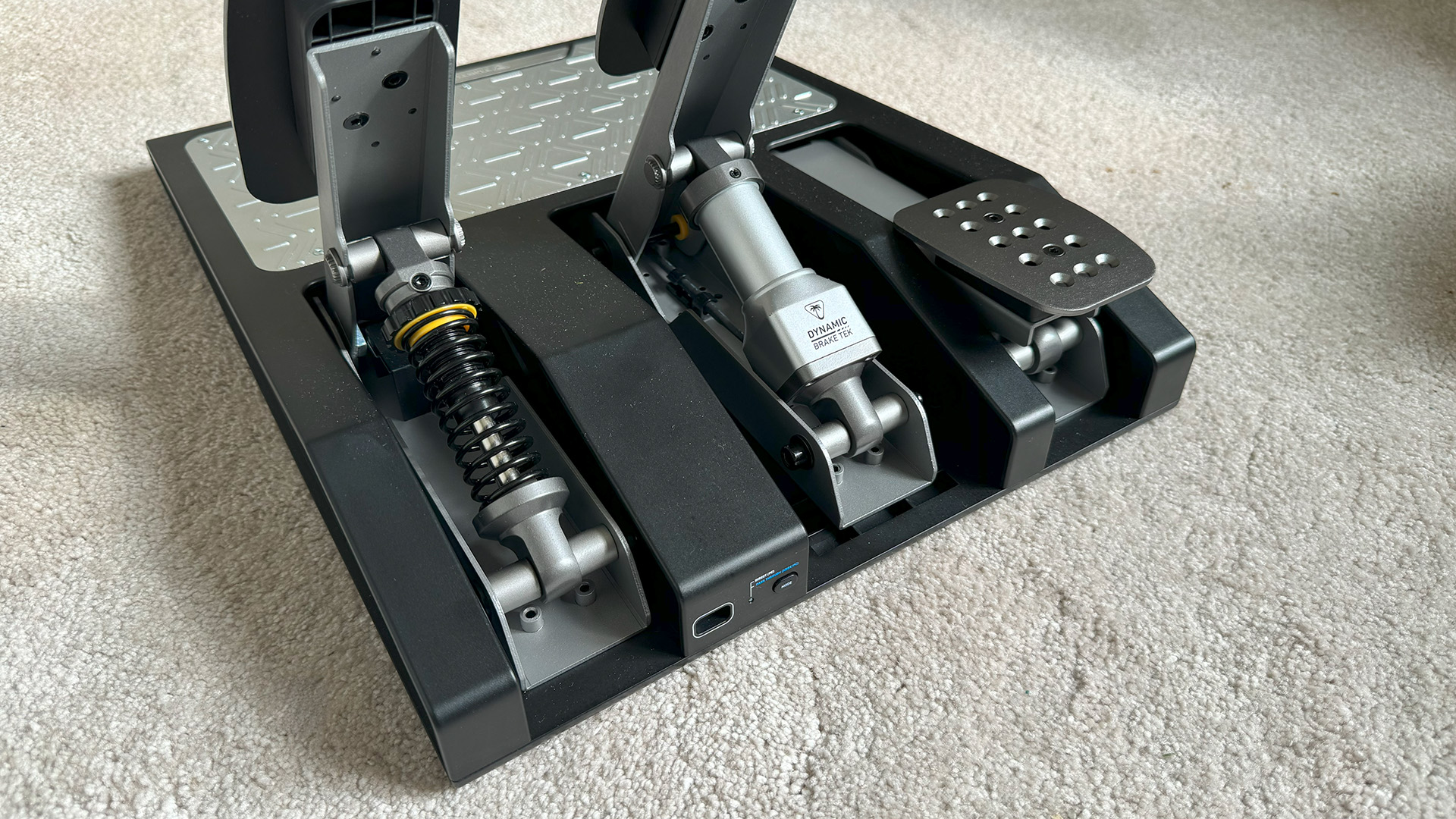
Unique to the VelocityOne Race is the integrated ‘Race Management Display’ that sits proudly on the front of the wheelbase. For the role it plays the screen is bright and clear enough to not be a problem though there are a noticeable amount of artifacts and distortion to the interface at times. This became worse after a recent firmware update which caused issues with the background behind a number of elements that I wasn’t able to overcome with any number of restarts. This was solely brought on by a firmware change though so I’m sure it could be ironed out with future updates and may even have been isolated to my unit.
The 30cm D-shaped wheel itself is wrapped in hand-stitched leather that feels great to hold and doesn’t feature the same scratchiness I found on the Logitech G Pro. It’s also nicely sculpted in a way that I found made it remain comfortable across driving styles, whether it was holding it edge to edge in F1 23 or a higher grip in Forza Horizon. Unfortunately, not all of the VelocityOne Race’s wheel inputs feel quite so good. While the buttons are tactile and responsive, they’re small and tightly spaced which makes it difficult to not accidentally press more than one at a time, and the four silver cogs feel very cheap. One of these is also reserved solely for controlling the RMD which leaves you with far fewer wheel-bound input options compared to competitors.
Features
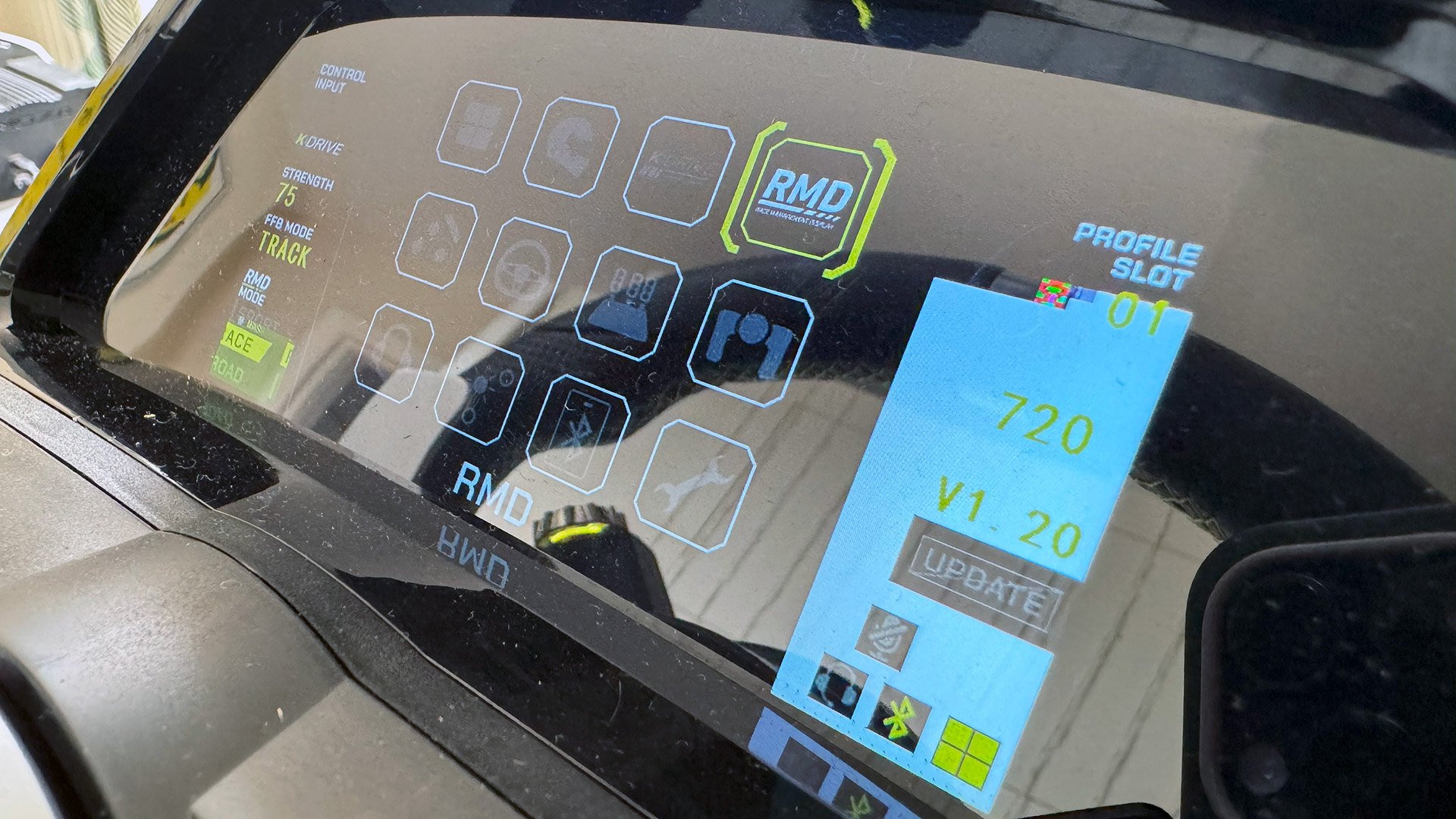
Sticking out of the side of the VelocityOne Race's wheelbase is a button box that, while excellent in theory, is let down by poor execution. The inputs here fall a long way short of the wheel’s overall build quality, and I quickly found myself ignoring it altogether. The buttons and dials are all a little too close together to be practical and I had to pay real attention to what I was trying to do to avoid misclicks - not what you need when you’re tearing down a back straight, and consistent with an issue we found with the Turtle Beach Stealth Ultra.
Most of this wheel’s inputs are mappable, but the largest two are reserved for powering it on and off which is a strange choice given how easily these could be accidentally fired off. They’re made doubly strange by the presence of a second set of power buttons on the side of the wheelbase itself. Some, like the four toggle switches on the bottom row, only register an input when flicked to the up position - which largely defeats the purpose of that kind of three-way switch.
The VelocityOne Race pedals are a mix of good and bad. Again similar to the Logitech G Pro pedals’ design, the large overall footprint offers plenty of heel space to support the three pedals on offer but the plastic construction leaves you wanting more for your money. There’s only a small amount of adjustment here with just the brake pedal able to shift left and right and while you can cleverly flatten the clutch pedal to free up a little space, there’s no way to remove it entirely and use that space as a wider two-pedal setup. Turtle Beach does include pads to aid with grip on both hard and carpeted flooring, although I found these pretty ineffective. The pedal box was still prone to moving around, particularly under braking and a bizarre choice to have the USB cable stick directly out from the back of the unit means you’re not able to wedge it against a wall like you can with some of the other best Xbox steering wheels.
Performance
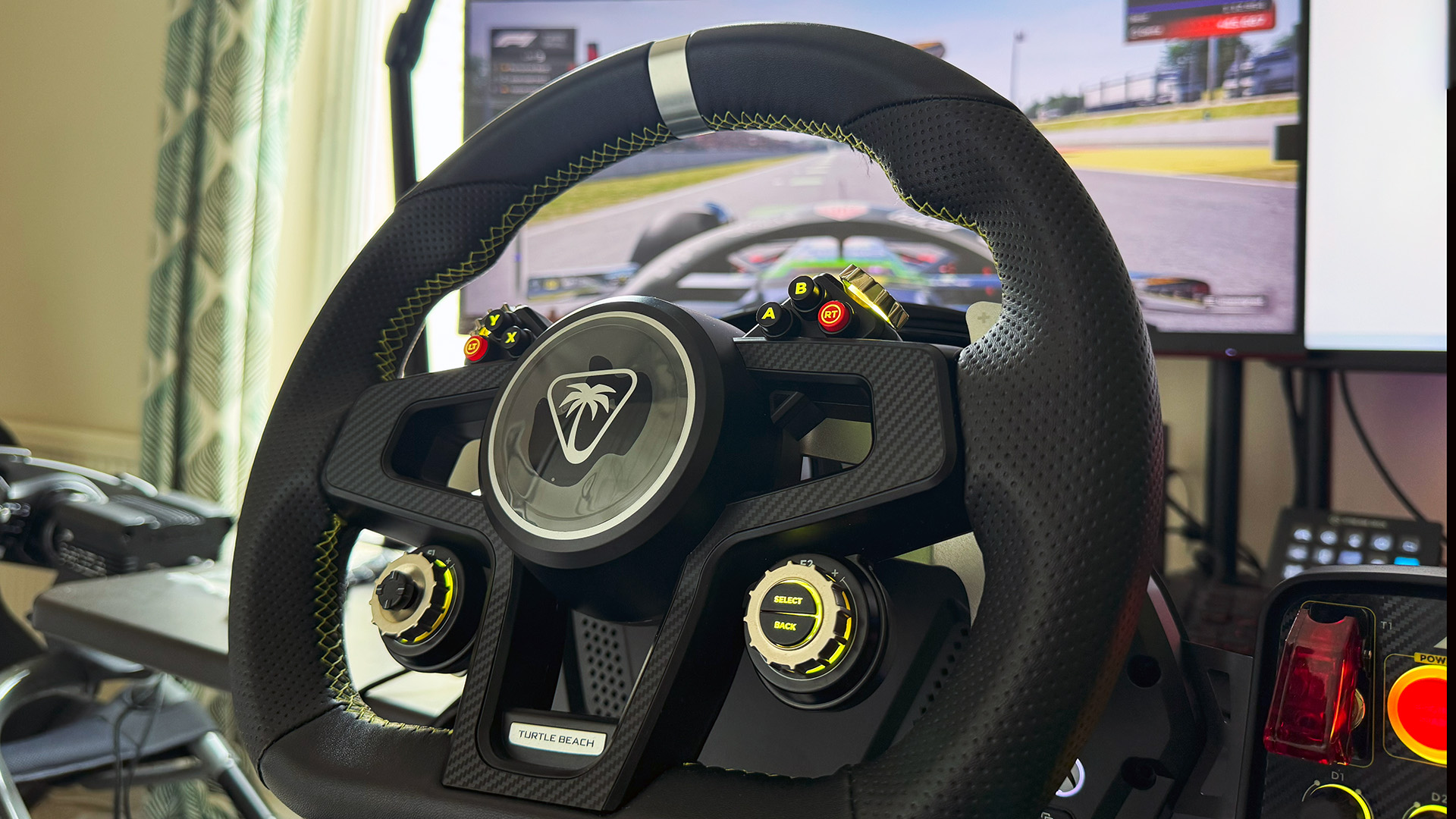
On paper the Turtle Beach VelocityOne Race slots neatly into a gap in the market for sim racers. There aren’t too many direct drive wheel and pedal combos available at this price point and even fewer that are compatible with Xbox as we see here. That should make it an enticing option for those looking to step up from or bypass a more basic gear-driven option like the Logitech G923 without going all out on a top-level setup. Unfortunately, the results aren’t quite there yet.
The benefit of a direct drive force feedback motor is stronger, more responsive power that should offer smooth and detailed racing. There were times the VelocityOne Race delivered this but too often the immersion was broken by odd behavior or a lack of power altogether. 7.2Nm of torque is plenty for new to mid-level racers and at times the VelocityOne Race did use this power to good effect. Through slow-speed corners in particular, the resistance is beefy and engaging but sweeping around longer, high-speed corners in F1 23 the force feedback becomes jittery and weak with no sense of the road or forces involved. It’s almost like something is lost in translation as the K: Drive motor becomes floaty while twitching every few meters like someone is pulling down on your wrist. I found this made it better suited to games like EA WRC (which is also one of the few games currently with out-of-the-box configuration support) where I was constantly fighting with the wheel as I slipped and drifted around windy gravel tracks.
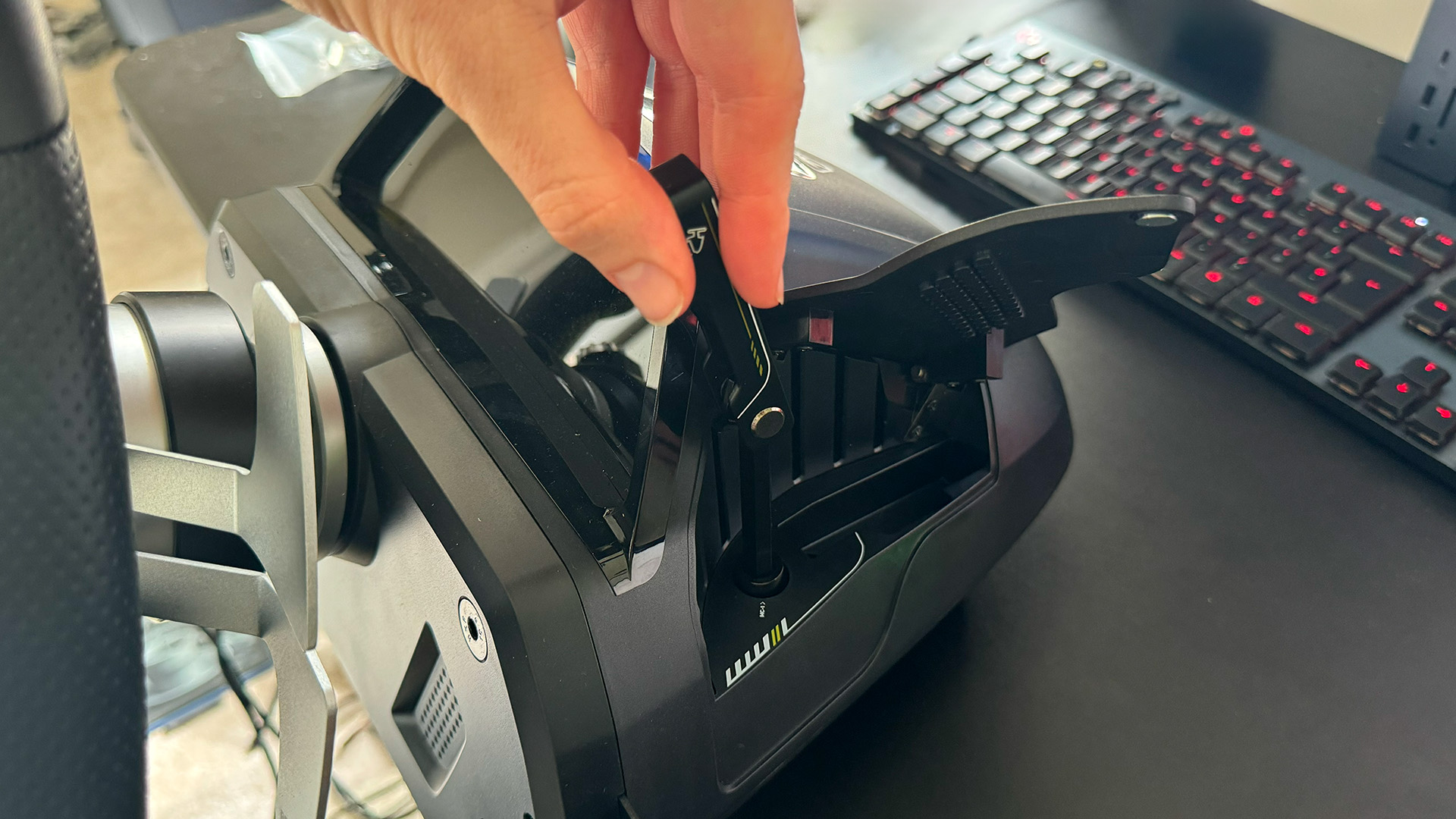
The pedals aren’t without a few quirks themselves. I found a confusing lack of correlation between physical travel on the accelerator and when games or the RMD would say I was full throttle. The reverse is true of the load cell brake pedal which offers a noticeably short travel distance and while it’s OK to use overall, it always felt a little peculiar. Furthermore, it’s stronger than the all-plastic pedal tray frame and there’s an alarming amount of flex in the frame itself in heavy braking situations. When bolting it onto the Playseat Challenge X I actually noticed the bottom plastic panel distorting around the screw hole rather than offering a tight and secure fit and I had to sheepishly loosen it a few turns for risk of it sheering off.
The ‘Race Management Display’ is a nifty addition and will be particularly useful for Xbox players. The screen allows for onboard configuration of a handful of settings that should allow you to dial in performance to your liking and situation. However it must be said that at this stage I found the changes each setting made particularly gentle. Even going from one extreme to another on some settings prompted a very minor difference in on-track feel. The RMD should also act as a real-time telemetry screen offering information on revs, lap deltas, and gears but at the time of writing no Xbox title officially supports RMD telemetry. While there are a number of PC titles that are named to offer compatibility, I was never able to get any working. It’s a shame as this is a stand-out feature against other wheels. Hopefully, there’ll be great plug-and-play support for this with future updates.
Should you buy the Turtle Beach VelocityOne Race
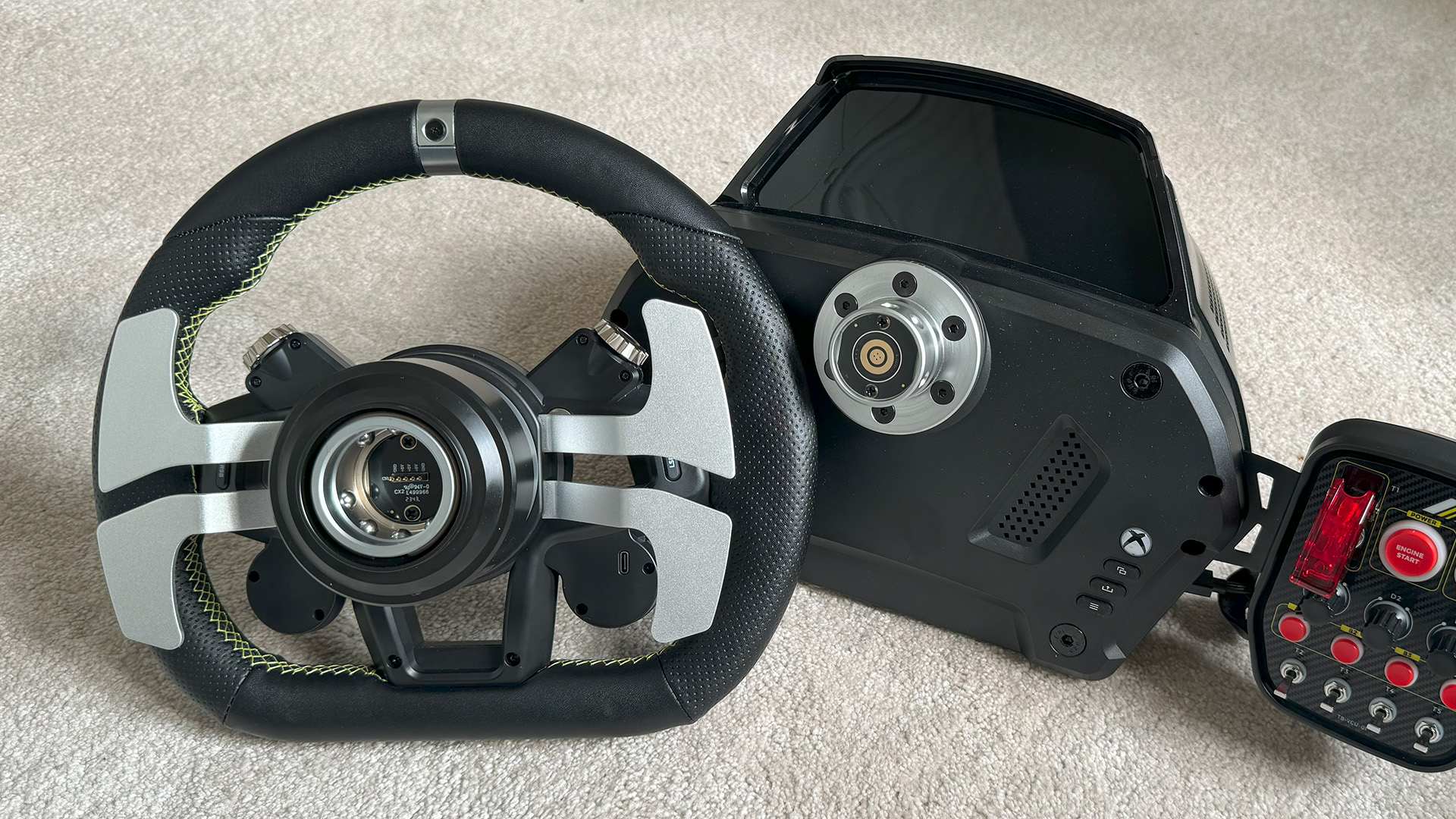
The VelocityOne Race is the first attempt from Turtle Beach at a mid-tier racing wheel and unfortunately, that lack of experience currently shows. There are promising signs, but it needs to overcome some rookie errors. The K: Drive motor is capable of good things in the right situations and new players in the market are always welcome, but a few too many teething issues spoil the experience overall.
In my testing, this was highlighted by just how much changed from one firmware update to another. The force feedback felt completely different with each but in most cases did improve. It makes me hopeful for the future with Turtle Beach in the sim racing space. It may simply be a case of getting more laps under its belt and refining the software to let the VelocityOne Race properly show off what it can do.
How we tested the Turtle Beach VelocityOne Race
I used the Turtle Beach VelocityOne Race on both the Xbox Series X and a gaming PC for a couple of weeks. Across both platforms, I tested it in Forza Motorsport as well as EA F1 23 and WRC and used it both attached to a desk and in the Playseat Challenge X sim racing seat.
For more on the ways we test the latest controllers, check out our hardware policy.
For more controllers check out the best PC controllers, the best PS5 controllers, and the best Xbox Series X controllers.
Alex is a streamer who has been creating gaming content for over a decade, streaming on Twitch regularly across the last five years. With a degree in film and a background in sports media, you'll find him jumping between 60,000 seat stadiums and his Animal Crossing island (where he's growing pears, in case you were wondering).
